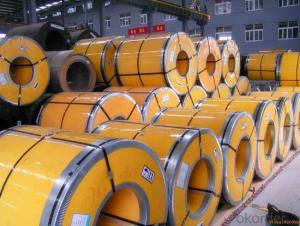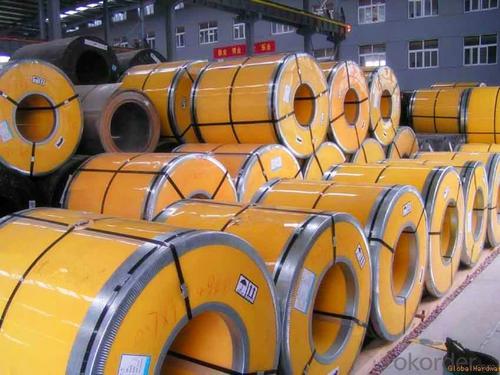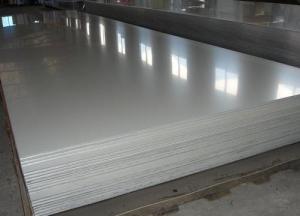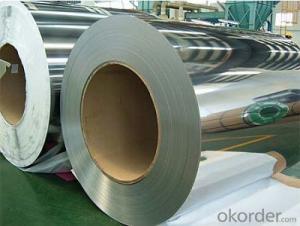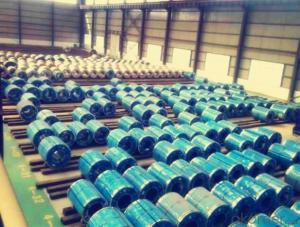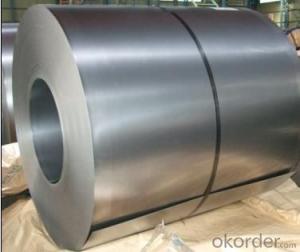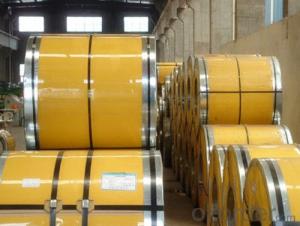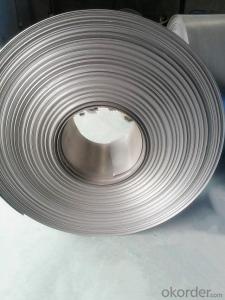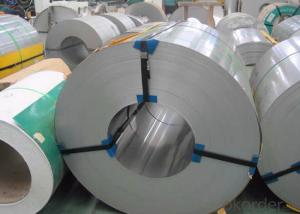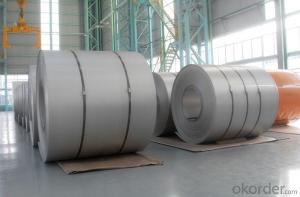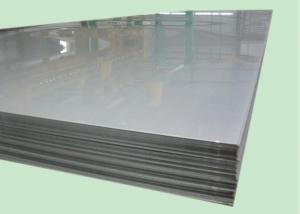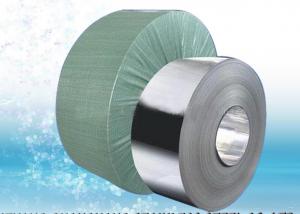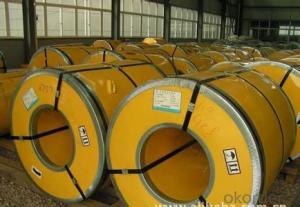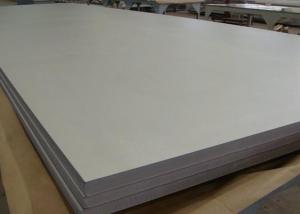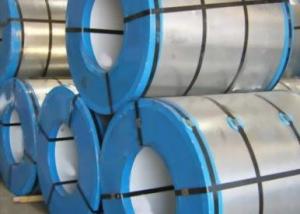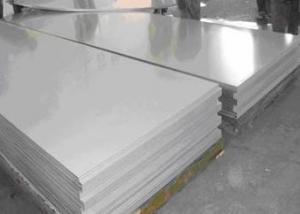304 SERIOUS COLD ROLLED STAINLESS STEEL COILS/SHEETS
- Loading Port:
- Guangzhou
- Payment Terms:
- TT OR LC
- Min Order Qty:
- 100 m.t.
- Supply Capability:
- 20000 m.t./month
OKorder Service Pledge
Quality Product, Order Online Tracking, Timely Delivery
OKorder Financial Service
Credit Rating, Credit Services, Credit Purchasing
You Might Also Like
Quick Details
| Grade: | 300 Series,304 | Standard: | JIS,AISI,ASTM,GB,DIN,EN | Length: | 1000-6000mm |
| Thickness: | 0.3-100mm | Width: | 1000-2000mm | Place of Origin: | foshan |
| Brand Name: | Model Number: | 304 | Type: | Coil | |
| Application: | construction, building, shipbuilding etc | Certification: | SGS | Surface: | 2B,BA,No.1,No.4,HK,Mirror finish,brush ,hairline |
| Producitivity: | 800Tons/Month | Loading Port: | guangzhou | Main market: | india,Japan,Saudi Arabia,Singapore,Indonesia etc |
| Supply status: | cold rolled and hot rolled |
Packaging & Delivery
| Packaging Detail: | standard export packing stainless steel coil grade 304 |
| Delivery Detail: | 7-10 workdays |
Specifications
1,stainless steel coil grade 304
2,Thickness:0.3-100mm
3Width:50-3000mm
4,Length:1000-6000
5,Deliver time:5 days
- Q: What are the different types of finishes for stainless steel strips?
- Stainless steel strips offer a range of finishes, each with its own unique aesthetic and functional qualities. The most common finishes include: 1. No. 1 Finish, also known as hot rolled annealed and pickled (HRAP), involves annealing the strip and then pickling it to remove any roughness. This results in a dull, coarse surface. 2. No. 2B Finish, the most popular choice, features a smooth and reflective surface. It is achieved by cold rolling and annealing the strip, followed by a final light cold rolling pass for brightness. 3. No. 2D Finish is similar to No. 2B, but with a slightly duller and less reflective surface. This finish is obtained by cold rolling the strip to a thinner gauge. 4. No. 3 Finish, also known as a ground finish, is achieved by grinding the surface of the strip with increasingly finer abrasive materials. It creates a smooth, unidirectional grain pattern. 5. No. 4 Finish, a brushed or satin finish, provides a refined appearance. It involves mechanically polishing the strip with abrasive belts or brushes to create a consistent, fine-grained finish. 6. No. 5 Finish is similar to No. 4, but with a higher level of polish. It is achieved by using finer abrasives and additional polishing steps, resulting in a mirror-like, highly reflective surface. 7. BA (Bright Annealed) Finish is a mirror-like finish achieved by annealing the strip in a controlled atmosphere and then cold rolling it. It offers the highest level of reflectivity and is commonly used for decorative purposes. It's important to remember that the appearance and quality of these finishes may vary depending on the stainless steel grade and manufacturing process. The choice of finish depends on the intended application, desired aesthetics, and functional requirements of the strip.
- Q: Are 111 stainless steel strips suitable for welding?
- Yes, 111 stainless steel strips are suitable for welding.
- Q: What are the different surface finishes for stainless steel strips?
- There are several different surface finishes available for stainless steel strips, including mill finish, brushed finish, mirror finish, and embossed finish.
- Q: Are stainless steel strips suitable for architectural facades?
- Yes, stainless steel strips are suitable for architectural facades. They offer a sleek and modern appearance, excellent durability, and resistance to corrosion, making them an ideal choice for both indoor and outdoor applications. Additionally, stainless steel can be easily manipulated into various shapes and sizes, allowing for creative and unique designs in architectural facades.
- Q: Are stainless steel strips suitable for elevator doors?
- Yes, stainless steel strips are highly suitable for elevator doors. Stainless steel is a durable and corrosion-resistant material, making it ideal for withstanding the wear and tear of daily elevator usage. Additionally, its sleek and modern appearance adds an aesthetic appeal to the elevator doors.
- Q: What are the different sizes available for stainless steel strips?
- A variety of sizes are offered for stainless steel strips to accommodate different applications and needs. Typically, the width of these strips can range from 0.25 inches (6.35 mm) to 24 inches (609.6 mm). The thickness, also known as gauge, can vary from 0.001 inches (0.0254 mm) to 0.250 inches (6.35 mm). These sizes are provided to meet the demands of various industries and purposes. Smaller and thinner stainless steel strips are commonly utilized in electronic components, medical devices, and precision instruments that require a high level of accuracy and precision. On the other hand, larger and thicker stainless steel strips are frequently used in construction, automotive manufacturing, and industrial applications that require strength and durability. It is worth noting that these sizes are not exhaustive and may differ depending on the manufacturer and specific requirements of customers. Custom sizes may also be available upon request to satisfy unique project needs.
- Q: How are stainless steel strips made?
- Stainless steel strips are manufactured through a process known as cold rolling. This involves passing a stainless steel coil through a set of rollers at room temperature, which gradually reduces the thickness and increases the length of the coil. Initially, the stainless steel coil is unwound and cleaned to remove any dirt or impurities. It then goes through a series of rolling mills, where the thickness is progressively reduced. Each mill consists of two or more rollers that exert pressure on the metal, causing it to elongate and become thinner. The process is repeated several times until the desired thickness is achieved. As the stainless steel strip gets thinner, it becomes more rigid and difficult to manipulate. To counteract this, annealing is performed at specific intervals during the rolling process. Annealing involves heating the strip to high temperatures and then allowing it to cool slowly. This helps to relieve internal stresses and improve the strip's ductility. After the cold rolling and annealing stages, the stainless steel strip may undergo additional processes, such as descaling, pickling, and passivating. Descaling removes any scales or oxides that may have formed on the strip's surface during rolling. Pickling involves treating the strip with an acid solution to remove any remaining impurities. Passivation is a final step that enhances the stainless steel's corrosion resistance by forming a thin, protective oxide layer on its surface. Once all these processes are complete, the stainless steel strip is cut to the desired length and packaged for shipment or further processing. It can be used in a wide range of applications, such as automotive components, kitchen appliances, construction materials, and electronic devices, due to its excellent strength, durability, and resistance to corrosion.
- Q: Can stainless steel strips be used in food processing applications?
- Certainly, food processing applications can utilize stainless steel strips. Given its exceptional corrosion resistance, durability, and hygiene properties, stainless steel emerges as an optimal material for the food industry. It effectively withstands rust, staining, and chemical reactions, rendering it suitable for interacting with diverse food products. Stainless steel strips frequently find their place in food processing equipment like conveyors, mixers, tanks, and cutting tools. Furthermore, stainless steel proves effortless to clean and maintain, thereby guaranteeing the utmost food safety standards and averting contamination.
- Q: What are the different types of stainless steel strips available?
- There are several different types of stainless steel strips available, including austenitic, ferritic, martensitic, and duplex stainless steel. Each type has its own unique properties and characteristics, making them suitable for various applications and industries.
- Q: Can stainless steel strips be used in the chemical manufacturing industry?
- Yes, stainless steel strips can be used in the chemical manufacturing industry. Stainless steel is known for its excellent corrosion resistance properties, making it highly suitable for use in environments where chemicals are present. Stainless steel strips are often used in the construction of chemical processing equipment such as tanks, reactors, and piping systems. The material's resistance to corrosion helps prevent contamination of the chemicals being processed, ensuring the integrity and purity of the final product. Stainless steel strips are also resistant to high temperatures and can withstand the harsh conditions often found in chemical manufacturing processes. Additionally, stainless steel is easy to clean and maintain, making it a cost-effective and long-lasting choice for the chemical industry.
Send your message to us
304 SERIOUS COLD ROLLED STAINLESS STEEL COILS/SHEETS
- Loading Port:
- Guangzhou
- Payment Terms:
- TT OR LC
- Min Order Qty:
- 100 m.t.
- Supply Capability:
- 20000 m.t./month
OKorder Service Pledge
Quality Product, Order Online Tracking, Timely Delivery
OKorder Financial Service
Credit Rating, Credit Services, Credit Purchasing
Similar products
Hot products
Hot Searches
Related keywords
